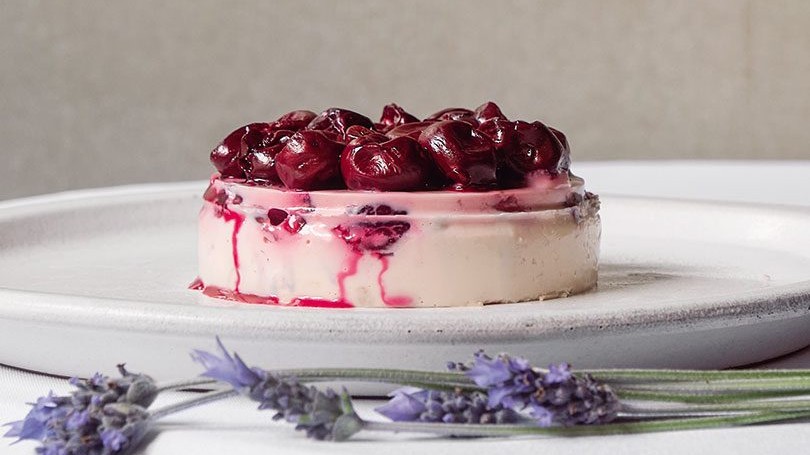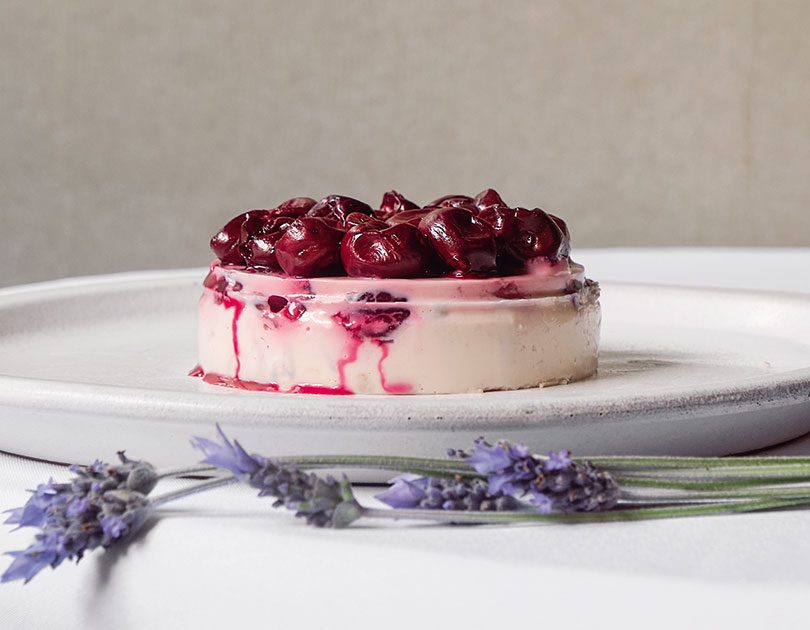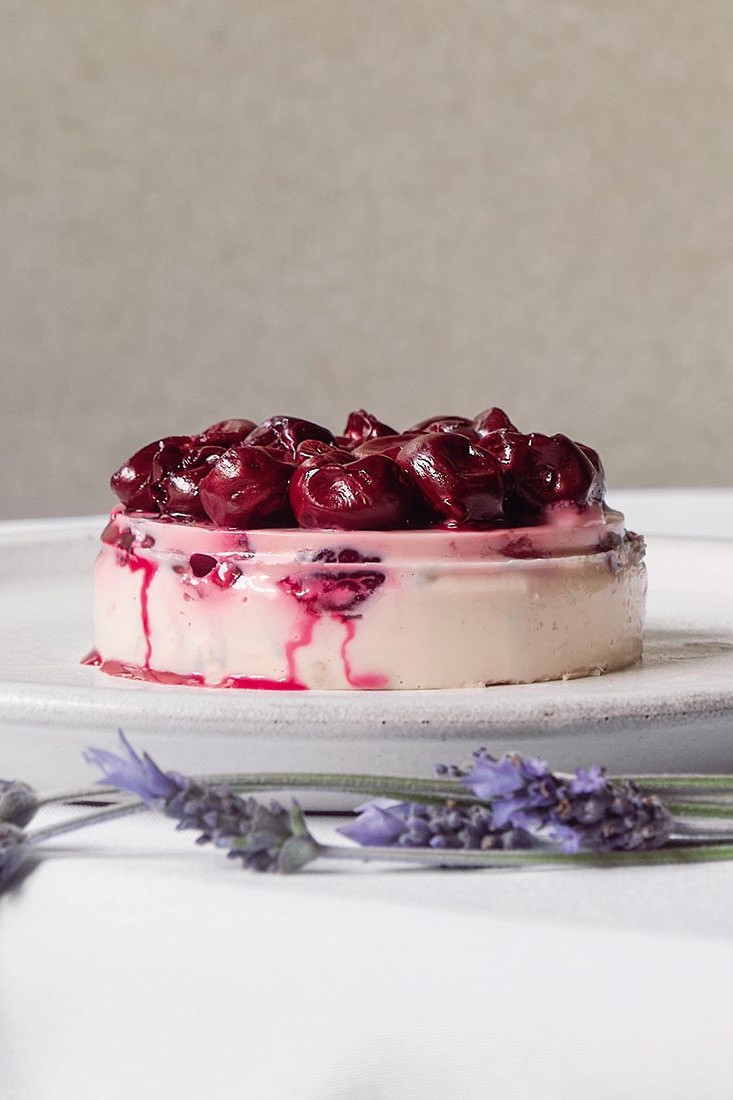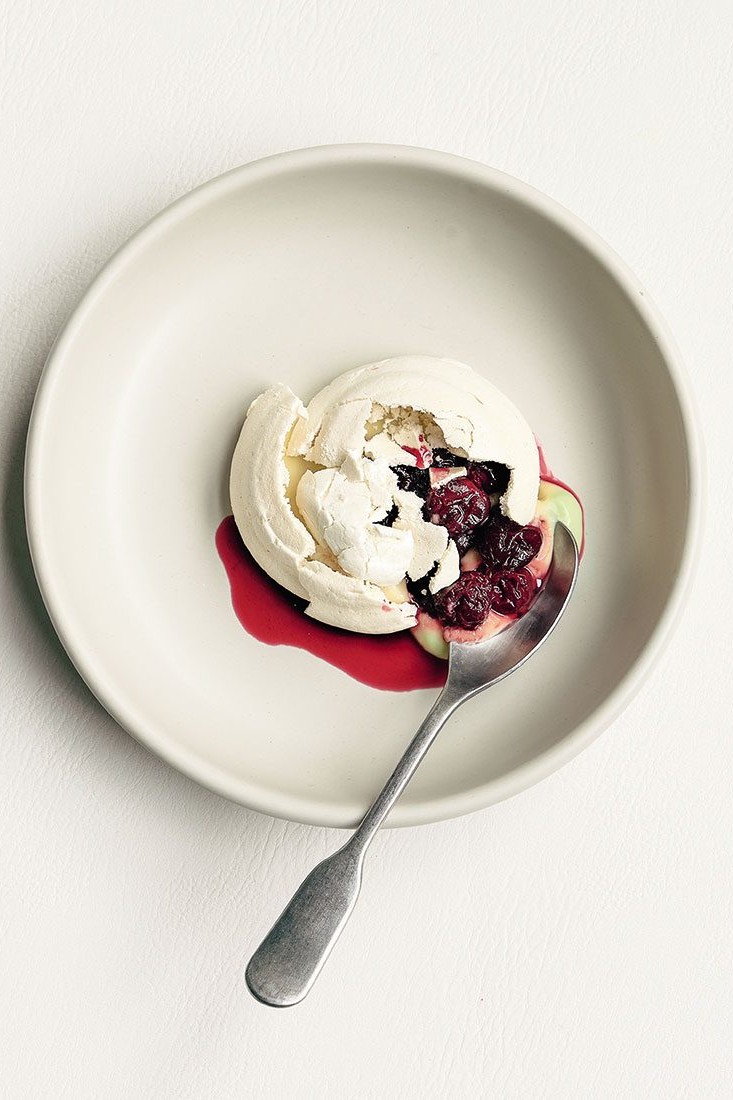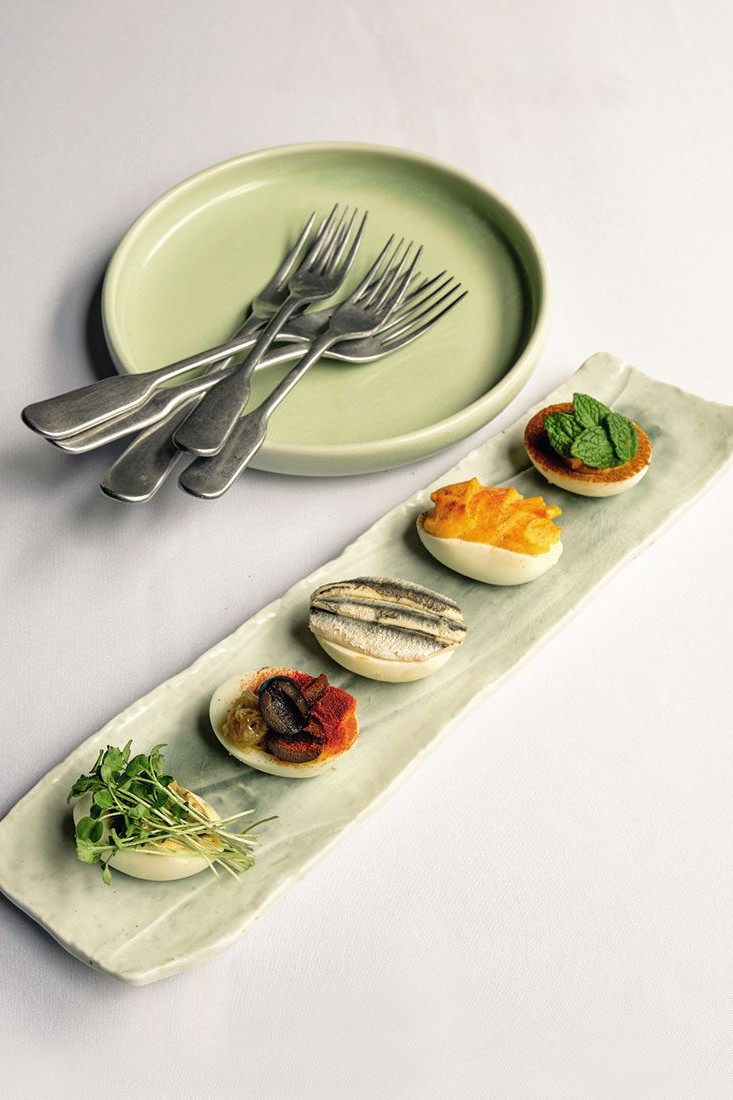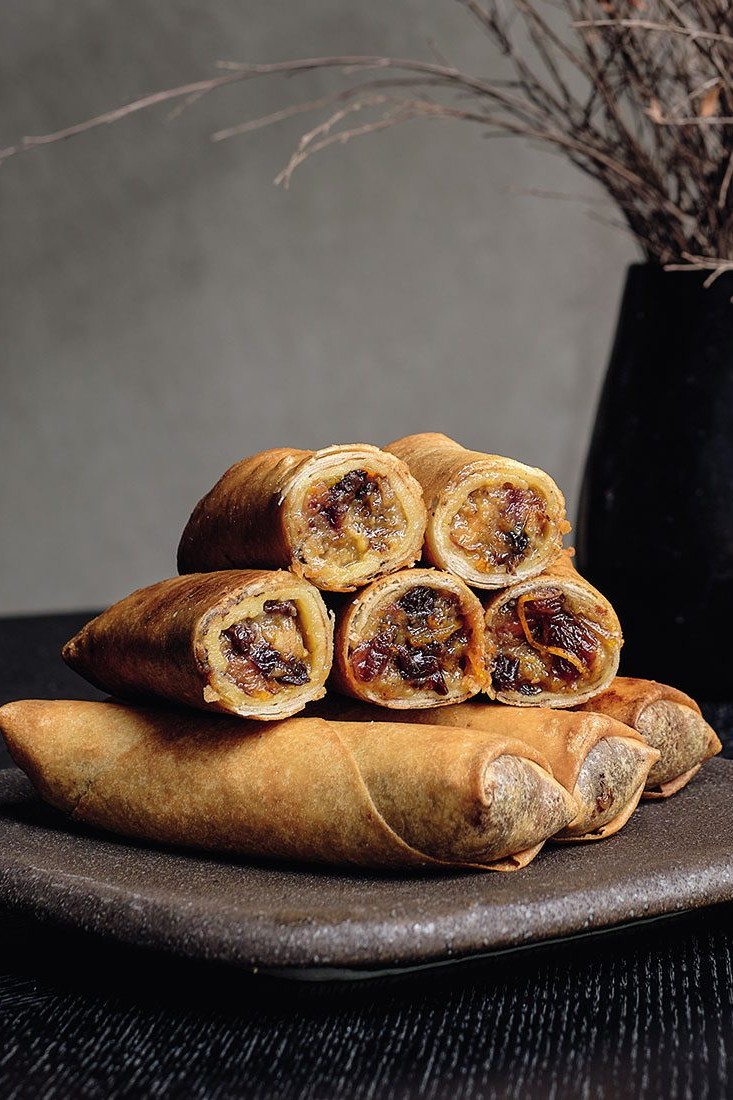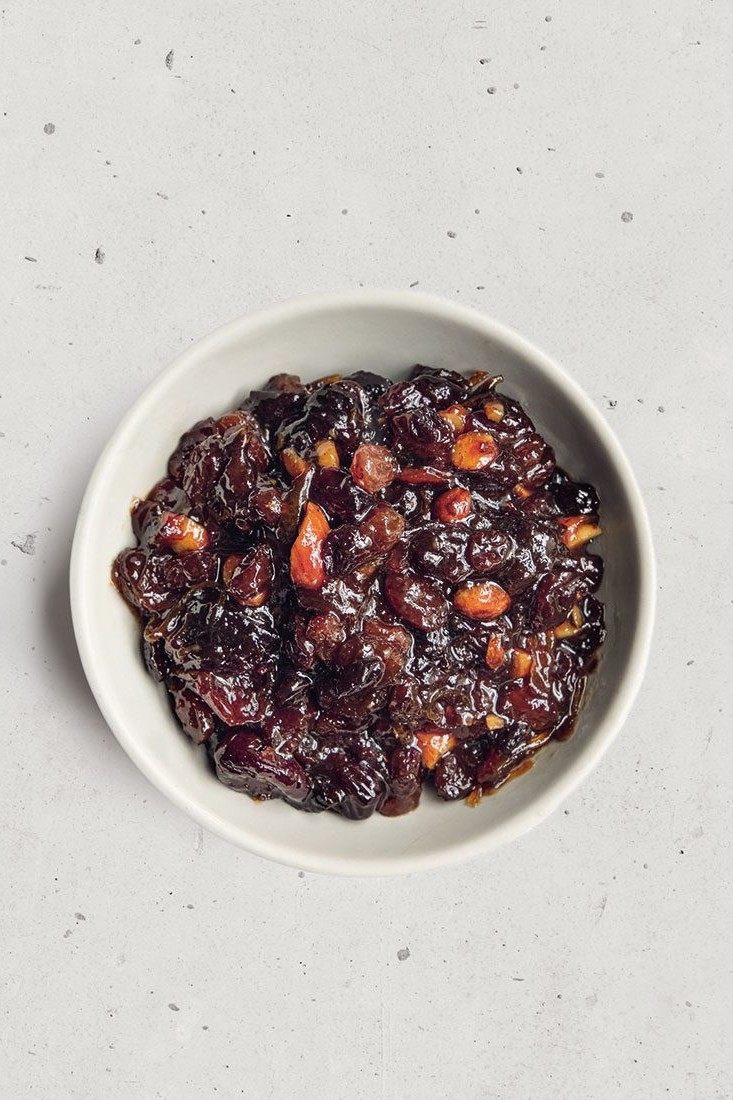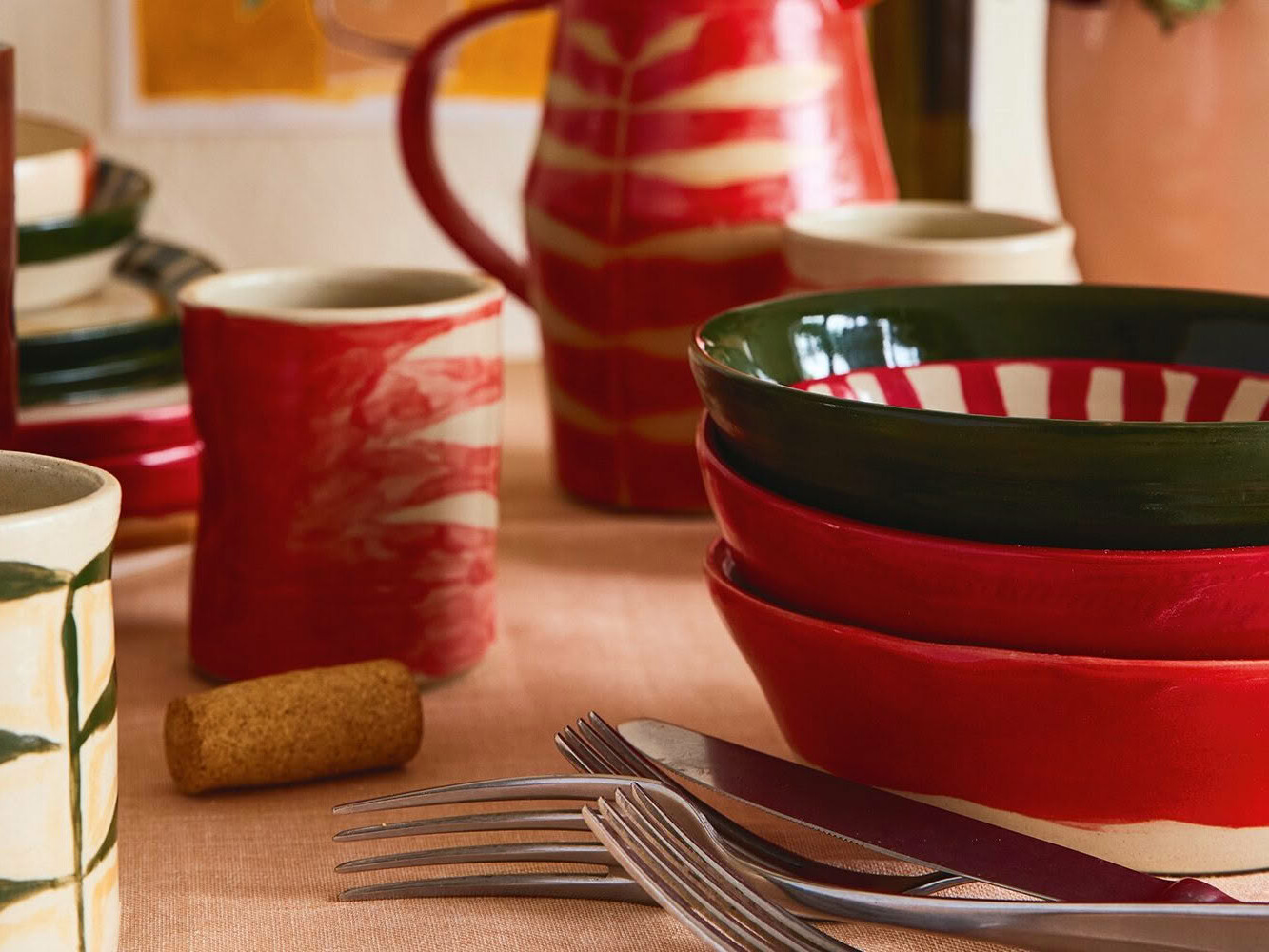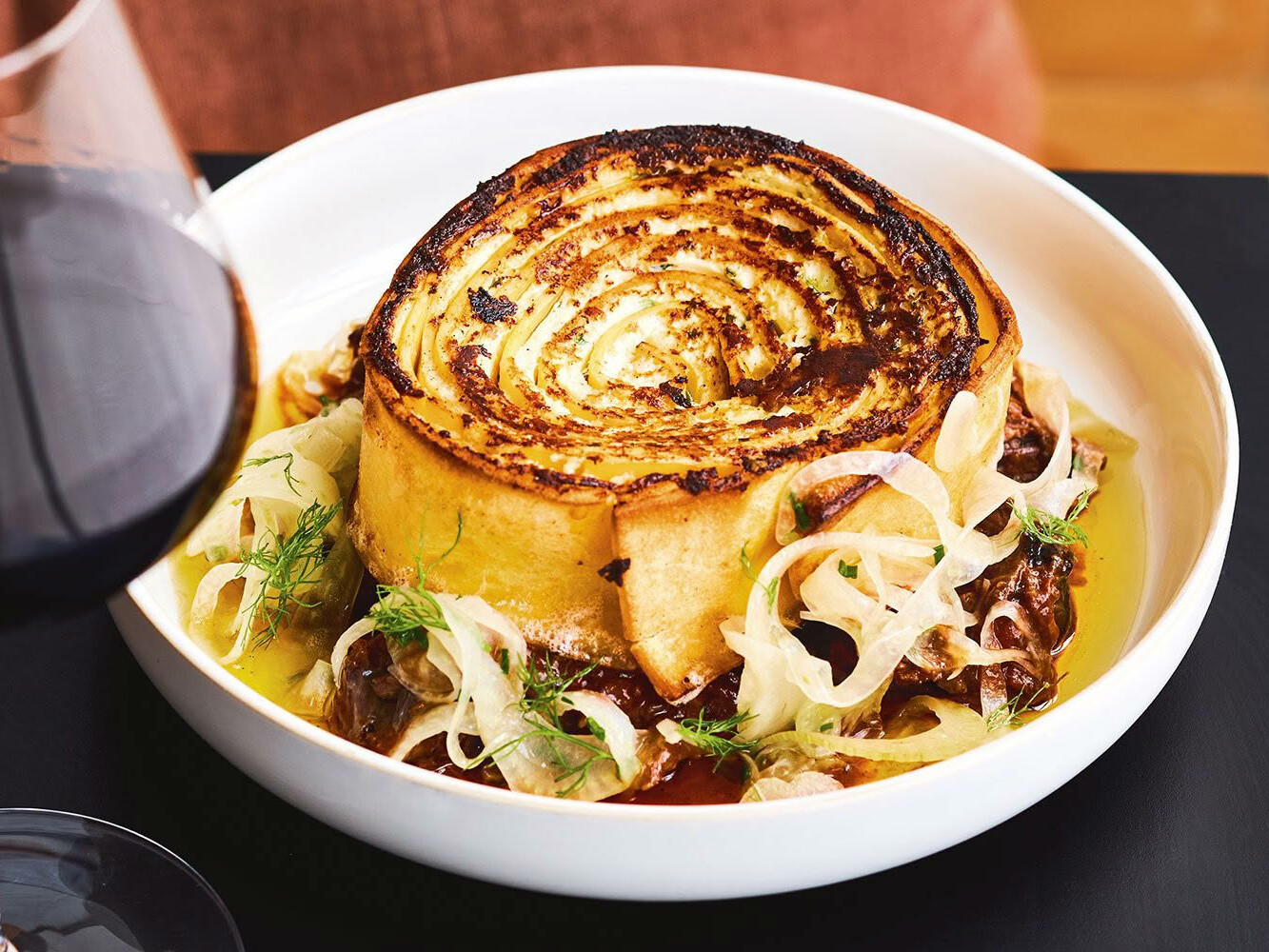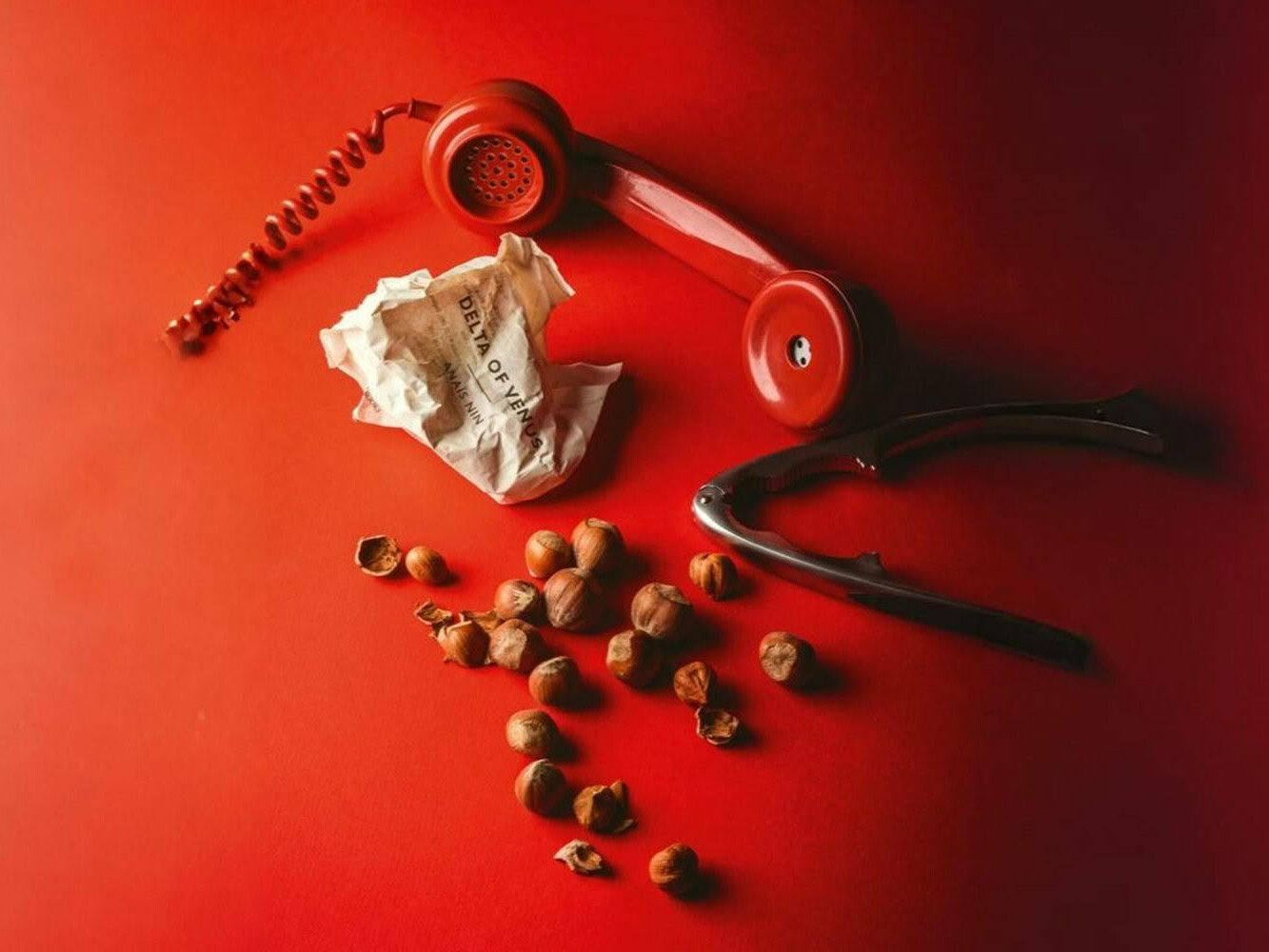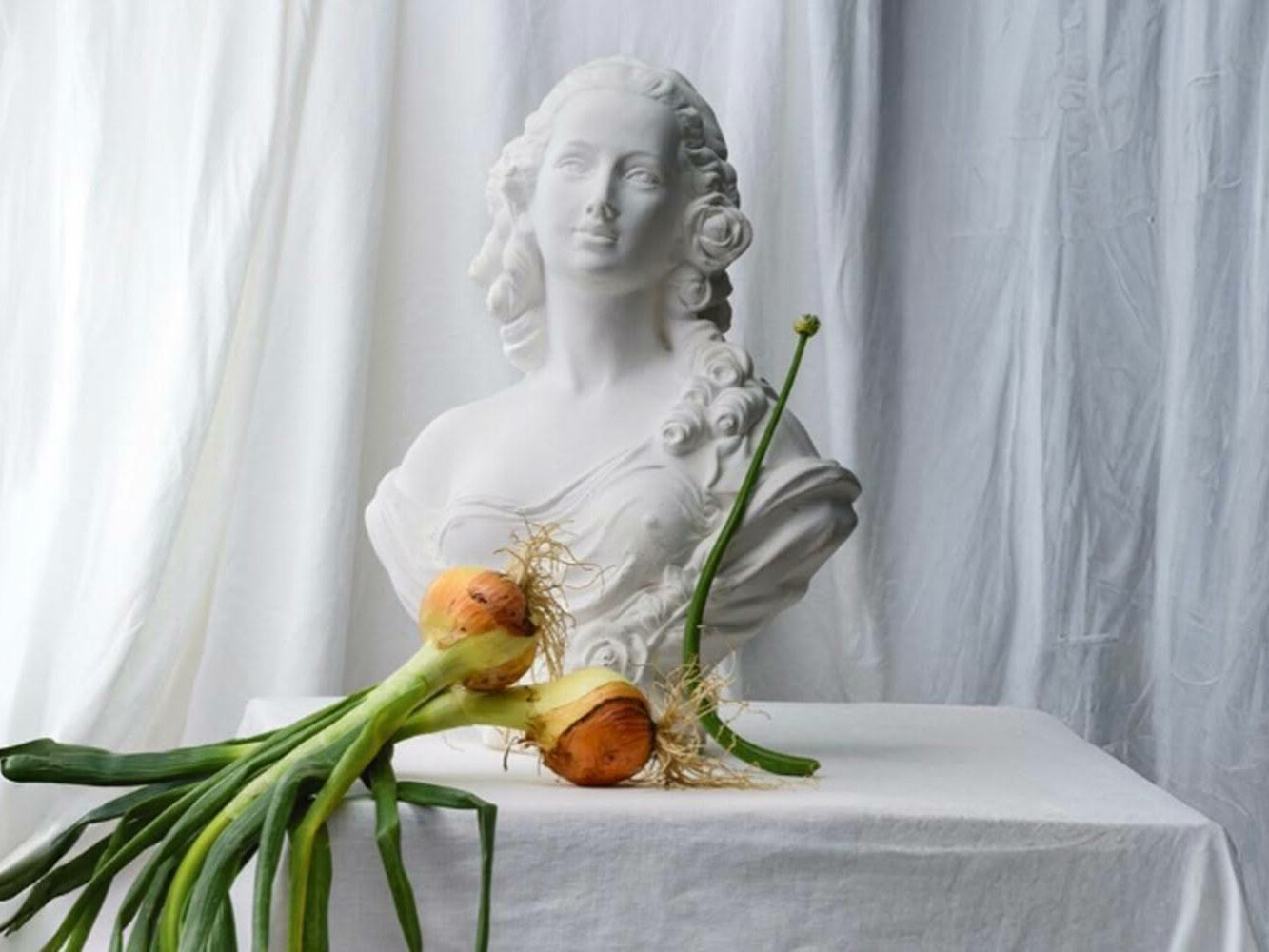David Neville gets to grips with a glut of summer cherries, reimagines Christmas favourites and welcomes devilled eggs back to the party.
THERE’S LOT OF . . . CHERRIES
Red is most definitely one of the integral colours of Christmas: red pōhutukawa petals lining the streets, tinsel and the pop-up stalls of shining red cherries. Cherries are good enough to eat as they are, but let’s take it one step further and make some dishes before they all get eaten raw.
GIVE THESE A GO…
Cherry lassi
Place 1 cup of fresh or frozen stoned cherries into a blender. Add 2 cups of yoghurt, 1 cup of cold milk, 1 teaspoon rosewater, 6–7 ice cubes and one pinch of salt. Cover with a lid and give 4–5 pulses to break the ice cubes up slowly. Continue to blend on high until smooth and when small, tight bubbles form on top when the blender is stopped. Divide between two chilled tall glasses.
Red cabbage, cherry & opal basil slaw
Remove the core from half a red cabbage. Quarter an apple and remove the core. Cut a fennel bulb in half and set aside any fronds. Peel a medium- sized onion and cut in half. Finely slice all vegetables to 1mm thick either by hand, mandolin or food processor attachment and discard any thick cabbage veins. Place into a large bowl with ½ cup dried cherries and 20 large opal basil leaves. Add 5 tablespoons thick mayonnaise, 2 tablespoons apple cider vinegar and celery seeds if you have them on hand. Season with salt and pepper and toss to combine.
Cherry & coconut turnovers
These aren’t traditional turnovers and require a little bit more work. They are more similar to sweet Hawaiian hand pies. In a medium-sized pot place 2½ cups full-fat coconut milk, 1 cup milk, ½ cup water and 1 cup caster sugar. Bring to a simmer, then remove from the heat. Whisk in ½ cup custard powder. Return to the heat and whisk until thick and shiny and bubbling like lava. Pour into a baking tray and allow to cool, then refrigerate for 4 hours to become firm. Cut 4 prepared puff pastry sheets into 8cm x 15cm squares (each sheet will make 6 rectangles.) Divide the coconut custard into 12 fairly equal pieces about 4cm x 10cm, place a piece of firm custard in the centre of each pastry rectangle and press in 5–6 stoned cherries. Brush the edges of the pastry with beaten egg yolk, cover with a pastry rectangle and press the edges with a fork to seal. Repeat for all pies. Brush with egg wash, sprinkle with demerara sugar and bake at 180°C for 20–25 minutes. Cool for 8–10 minutes before eating.
Sour cherry romesco sauce
Brush 4 large red peppers with oil and put them under, and as close to, a hot grill as possible. Grill until blistered and blackened on each side. Place into a large bowl, cover with plastic wrap and leave to sweat for 30 minutes. Scrape off the charred skin with the edge of a knife and remove seeds. Place peppers in a tall blender with 2 medium-sized ripe tomatoes, 1 cup raw blanched almonds, 2 medium-sized peeled garlic cloves, ¼ cup flat-leafed parsley, ½ cup stoned sour cherries and juice from ½ lemon. Blitz on low speed and drizzle in ¾ cup olive oil until smooth and the thickness of yoghurt. Season with salt and pepper and pass through a sieve.
CELEBRATING THE STAPLES . . . EGG WHITES
GIVE THESE A GO…
Egg whites: the bane of every recipe that asks for egg yolks only. Egg whites, like people, develop different personalities as they age. Fresh whites are ideal for raw use. Egg whites thin as they age (much like hair), making them better suited to baking. One thing remains the same though: egg whites and any trace of fat or oil just won’t work. Always use clean equipment with egg whites.
Tuile biscuits
Melt 125g butter in a small pot, then cool. Place 4 egg whites into a bowl with 125g caster sugar and whisk until foamy. Stir in 60g sieved plain flour with a pinch of salt. Beat in melted butter until incorporated and smooth. Place into the fridge for 2–3 hours to cool and firm. Heat the oven to 180°C. Line a baking tray with baking paper or a silicone mat. Roll the dough into 40 small balls the size of an almond and place onto the tray with 5–6 cm space between. Bake for 3–4 minutes then turn the tray and continue baking for 2–3 minutes until deep golden brown. Remove from the oven and allow to cool for 4 minutes before trying to remove from the tray. The biscuits will crisp upon cooling.
COOK’S TIP: If you want a challenge, try forming tuiles into different shapes – love hearts, geometric shapes; it’s really up to you. Take a leftover ice-cream lid and make a stencil using a Stanley-style knife. Using a small offset spatula gently spread the dough over the template shape to a thickness of 1mm.
Chocolate soufflé
The soufflé is often revered for its technical skill, but the truth is they aren’t hard to make. What they are is temperamental. Follow the steps carefully, work gently… and don’t open the oven door prematurely. Thoroughly coat the inside of four 8cm x 6cm ramekins with butter and sprinkle with sugar to coat all the sides evenly. Tap out excess sugar. Put in the fridge to chill. Place 20g cornflour and 20ml of milk into a small pot and cook over low heat to form a paste. Add 150ml full-cream milk and bring to a simmer, whisking to remove lumps and thicken until it resembles white sauce. Add 160g 72% dark chocolate, remove from heat and stir until chocolate has melted. Pour into a large bowl to cool to blood temperature. Fold 2 large egg yolks into the chocolate mixture and set aside. Beat 2 egg whites in a clean bowl, then gradually add 40g caster sugar and beat to medium-stiff peaks. Fold egg whites through the chocolate mixture gently until no white can be seen. Divide the mixture between chilled ramekins, tap firmly to remove air pockets and run a knife tip around the edge of the soufflé. Bake at 175°C for 16 minutes. Carefully remove from the oven and serve immediately with ice cream.
Whisky pomegranate sour
One sunny day a restaurant worker asked what they should do with spare egg whites. Someone said, “Make them into a drink.” And that person did. Pour 60ml whisky into a shaker, add 25ml pomegranate juice, 15ml maple syrup and 1 fresh egg white. Shake for 10–20 seconds. Remove lid and add a cup of ice cubes and shake again until the shaker feels ice cold to the touch. Strain into two tumblers and add 2–3 drops of Angostura bitters to the foam.
No-churn plum sorbet
Open one 850g can of Doris plums and strain juices into a pot. Add a star anise pod and a cinnamon quill, bring to a simmer and reduce to the consistency of maple syrup. Remove from the heat. Remove stones from the plums and add plums to the syrup. Blitz until smooth. Beat 3 egg whites to stiff peaks and fold through the plum purée. Pour into a suitably sized rectangular container and freeze overnight.
REINVENTING THE MEAL . . . DEVILLED EGGS
GIVE THESE A GO…
All things come back into fashion: low-cut jeans, the ‘Jennifer’ hairstyle, and maybe even Suede. In making these devilled eggs and eating them, I did wonder if they should have ever been removed from the menu in the first place. It’s hard to say where the devilled egg came from, but most accounts find them as far back as ancient Rome. The ‘devilled’ reference is simply used to describe any food that has a kick of spice. Sublimely good, I would encourage anyone to not overlook this rarely seen dish.
Devilled eggs with masala, yoghurt & mint
Cook the eggs as described here and chill for 1 hour in the fridge. Gently crack and remove the shell and cut eggs lengthways. Scoop out egg yolks into a bowl and mix with ½ cup thick natural yoghurt and 2 teaspoons masala spice. Add a teaspoon of salt and a teaspoon of lemon juice and mix well. Carefully scoop egg mix back into egg white hollows and garnish with 2–3 small mint leaves and an additional sprinkle of masala spice.
Devilled eggs with chilli, paprika & black olive
Cook the eggs as described here and chill for 1 hour in the fridge. Heat a tablespoon of oil in a medium pan and gently cook 1 cup finely diced onion and a crushed garlic clove. Add ½ tablespoon of smoked paprika and cook for 5–7 minutes until lightly caramelised. Cool, then add a teaspoon of Tabasco sauce. Reserve a little onion to garnish. Gently crack and remove the shell, cut eggs lengthways and scoop out yolks. Add yolks to onion mix with 2–3 tablespoons mayonnaise and a teaspoon of salt. Mix to combine. Fill egg hollows and garnish with halved black olives, onion and a pinch of paprika.
Devilled eggs with wasabi & white anchovy
Cook the eggs as described here and chill for 1 hour in the fridge. Gently crack and remove the shell and cut eggs lengthways. Scoop out egg yolks into a bowl and mix with ½ cup mayonnaise and ½ tablespoon wasabi powder, the juice of ¼ of a lemon and a teaspoon of dark soy sauce. Fill the egg white hollows with wasabi mix and top with 2–3 good-quality white anchovy fillets.
Devilled eggs with avocado and watercress
Cook the eggs as described here and chill for 1 hour in the fridge. Gently crack and remove the shell and cut eggs lengthways. Scoop out egg yolks into a bowl and mix with the flesh of one large, ripe avocado, a teaspoon sea salt and the juice of ¼ of a lemon. Carefully fill the egg white hollows with the mix and garnish with watercress and a healthy grind of black pepper.
MAKE IT YOURSELF . . . FRUIT MINCE
GIVE THESE A GO…
There are very few things as perplexing as trying to explain to a small child that the Christmas mince pie isn’t meat. As Kiwis, we take the mince pie pretty seriously, so with due diligence, we should treat this ‘mince pie’ with the same accord. The term formed when Europeans discovered the Middle East and dishes made with mutton, dried fruit, spices and pastry. Somewhere these exotic meat pies became known as mince pies with suet and fruit. Today, we know it as fruit mince or Christmas mince.
Fruit mince game sauce
Dice 1 cup onion and slice 2 garlic cloves. Fry in 2 tablespoons butter until beginning to turn golden. Add 100ml port or red wine and 1½ tablespoons red wine vinegar and reduce to a syrupy consistency. Add 4 tablespoons fruit mince and a bay leaf and loosen up the fruit mince without scorching. Add 4 cups good-quality beef stock and bring to a simmer. Reduce by half into a medium-bodied sauce. Swirl in a tablespoon of chilled butter and season with 2 pinches of salt and 3–4 grinds of black pepper.
Kūmara & fruit mince ice-cream
In the not-so-distant past there was a brief fad for potato ice cream. Why use potato when you could use kūmara and actually make it nice? Pierce 1 medium- sized golden kūmara all over with a fork. Bake at 180°C for 30–40 minutes until tender. Remove from heat and allow to cool. Split the kūmara and scrape out the flesh. Bring 2 cups milk, 1 cup cream and ¾ cup of sugar to a simmer. Remove from heat, add cooked kūmara and blend until smooth. Return to the heat and add 2 tablespoons glucose and ½ cup each of cream cheese and sour cream. Bring almost to a simmer and stir until smooth. Add 1 teaspoon of sea salt and ½ cup fruit mince and stir to combine. Allow to cool and pour into a container and freeze overnight.
Fruit mince Japanese pancakes
In a large bowl, place 2 cups sieved flour, 4 tablespoons caster sugar and 1 teaspoon baking powder. Whisk together to combine. Make a well and add 1½ cups milk, 4 tablespoons neutral oil and 2 egg yolks. Whisk to form a batter. In a separate bowl whisk 4 egg whites to medium-stiff peaks. Fold egg whites through the pancake batter. Add 5 tablespoons fruit mince and gently fold through. Heat a non-stick pan over a very low heat. Place three 7cm x 4cm ring moulds into the pan and thoroughly brush the insides with oil. Fill each mould three-quarters high and gently cook over low heat until the top of the pancake is filled with bubbles and you can see the pancake is just coming away from the edge ever so slightly. Using deft hands and a spatula, carefully flip and remove the ring. Repeat for the remaining mix.

